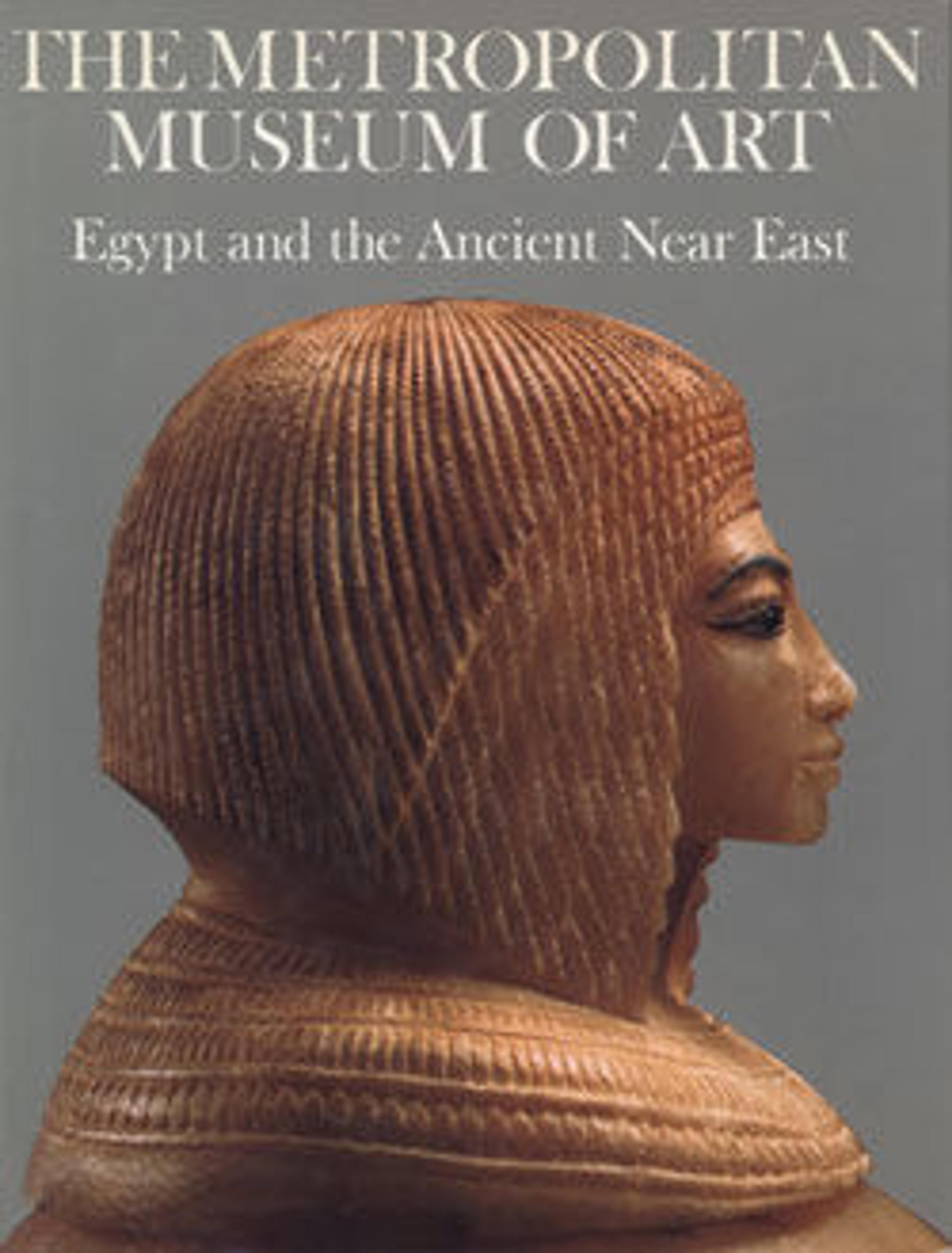West wall of the chapel of Nikauhor and Sekhemhathor
Nikauhor's single figures in particular are very finely carved; his mature, austere features are characteristic of 5th Dynasty style as opposed to that of the 4th. The relief flanking his wife's false door is flatter and less modeled.
The intervening expanse of wall shows, from the bottom, a painted dado, the slaughter of cattle, the presentation of offerings, and a game of senet being played alongside a group of musicians. Such scenes sometimes have recognizably allegorical meanings: the passage through the afterworld was, for instance, likened to a game of senet. White outlines among and over the figures of the uppermost preserved register are traces of chair legs and the leg of a large seated figure, which belonged to an erased scene.
The mastaba of Nikauhor, like those of Raemkai and Perneb, was located in a cemetery north of the Djoser complex.
Artwork Details
- Title: West wall of the chapel of Nikauhor and Sekhemhathor
- Period: Old Kingdom
- Dynasty: Dynasty 5
- Reign: reign of Userkaf–Niuserre
- Date: ca. 2465–2389 B.C.
- Geography: From Egypt, Memphite Region, Saqqara, Cemetery north of Djoser complex, Tomb QS 915, west wall, Egyptian Antiquities Service excavations
- Medium: Limestone, paint
- Credit Line: Rogers Fund, 1908
- Object Number: 08.201.2a–g
- Curatorial Department: Egyptian Art
Audio
3255. West wall of the chapel of Nikauhor and Sekhemhathor
Gallery 103
This wall comes from a tomb belonging to a man named Nikauhor, and his wife, Sekhemhathor. Nikauhor was a simple priest in the time of Userkaf, first king of Dynasty Five, in about 2450 BC.
On either side of the wall, you’ll see a recessed niche flanked by figures. These niches are known as false doors, and mark the area where offerings were placed and prayers were said in memory of the deceased. Nikauhor’s niche is on the left, and Sekhemhathor’s is on the right.
Look at the innermost recess of one of the false doors. Each is painted red with black stippling in imitation of granite, a costly stone that was probably beyond the owner’s means. Now step back and you’ll notice that the best sculptor was employed to carve the large images of Nikauhor that flank his false door at the left. This is Fifth Dynasty relief at its finest.
Look at the area between the false doors, where busy scenes depict festivities and bringing of offerings. In the lowest row, or register, men butcher cattle. In the register above, offering bearers carry jars of liquid, and trays laden with fruit and meat. In the top register, musicians play flutes and a harp. At the left of this register, two men play senet, a popular game played on a sort of checkerboard. There are indications that the playing of senet was regarded as a symbolic voyage through the underworld, and its representation in a tomb may have helped the deceased on his own voyage to the next world.
Interestingly, the wall in this area shows evidence of recarving. Look at the player on the left. Crossing his body, you’ll see the ghostly white traces of a chair leg. And across his companion, you can just make out the traces of the feet and calves of a larger seated figure: all that is left of an earlier image.
These relief blocks were among the Museum’s early purchases from the Egyptian government and have been in the Egyptian Department since 1908.
More Artwork
Research Resources
The Met provides unparalleled resources for research and welcomes an international community of students and scholars. The Met's Open Access API is where creators and researchers can connect to the The Met collection. Open Access data and public domain images are available for unrestricted commercial and noncommercial use without permission or fee.
To request images under copyright and other restrictions, please use this Image Request form.
Feedback
We continue to research and examine historical and cultural context for objects in The Met collection. If you have comments or questions about this object record, please complete and submit this form. The Museum looks forward to receiving your comments.
